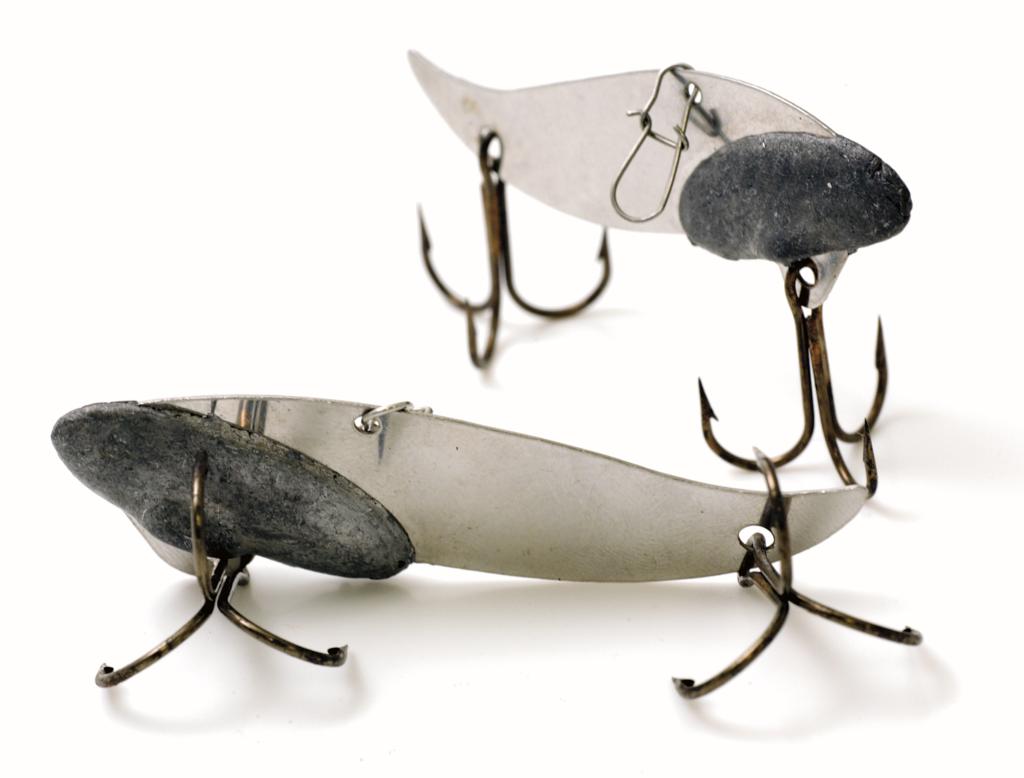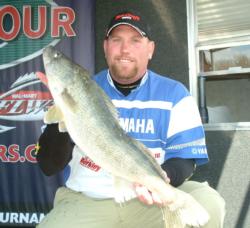Blade runners
Toss heavy metal for cold-river walleyes

During winter, when ice floes riddle the rivers north of the Mason-Dixon Line and most lakes above it are locked tight with an unyielding surface layer, open-water opportunities for walleyes and saugers are limited to choice situations below dams. Ice can’t form in their fast-flowing tailraces, and the fish gather in them to overwinter. In other words, it’s perfect for midwinter boating-and-fishing blasts – perfect, too, for lures made of heavy metal to slice the current and trigger strikes in spite, or because of, the speed with which you work them.
Welcome to a stronghold of blade baits. The compact, vibrating metal wedges strum when lifted and plummet when dropped, slamming walleye and sauger with their speedy proficiency when something slower and more methodical falls short. “You can cover a lot more water with blades,” said Bobby Crow, a professional walleye angler from Paterson, Wash. “You wouldn’t be able to cover that much water with a jig.”
Crow’s primary course of attack with blades is a search-and-destroy method that he has refined year-round on the big liquid of the Pacific Northwest’s Columbia River. He excels, however, in thawed pockets of more traditional winter-walleye waters – say, on the Mississippi River – where deep channel edges, concentrated hordes of fish and blade baits unite.
Given the shape and flash of blades, another factor contributing to their effectiveness on moving water is the presence of shad; ubiquitous baitfish on rivers in walleye and sauger country – the Cumberland, Ohio, Tennessee and Wisconsin rivers among them.
Size matters, too, depending on the variables of current and the constant of water depth in the range of 18 to 40 feet. On Crow’s Columbia, the current whisks at 3 to 4 mph; elsewhere, half that would constitute decent flow. For Crow’s part, he sticks to 1/2- or 5/8-ounce blades. On the Mississippi and other waters, 1/4- to 3/8-ounce blades are usually sufficient.
 Tackle is an important consideration. On spinning tackle, Crow spools a reel with 10-pound Berkley FireLine ending with a 2-foot leader of 8-pound monofilament. He connects the blade to the line’s business end with a plain snap, not a snap swivel, which hampers the blade’s tumble on the fall.
Tackle is an important consideration. On spinning tackle, Crow spools a reel with 10-pound Berkley FireLine ending with a 2-foot leader of 8-pound monofilament. He connects the blade to the line’s business end with a plain snap, not a snap swivel, which hampers the blade’s tumble on the fall.
To work a blade, Crow suggests dropping it to the bottom, keeping the line purely vertical by chasing after it with a bowmount electric trolling motor and otherwise drifting at the speed of the current. The stroke, however, can vary. Experiment with 6-inch lifts and then with more aggressive rips of a foot or more.
Crow’s favorite blades, furthermore, are those with flat, rather than cupped, sides. Cupped blades tend to tumble less effectively in current. Some options: Reef Runner’s Cicada, Silver Buddy Lures’ Silver Buddies, Heddon’s Sonar and Yakima Bait’s Showdown. When blades have multiple holes for attaching the snap, go with the one in the middle for vertical jigging.
With blades, it’s possible to keep the bait near bottom with speed and flash while straining specific holding areas such as deep holes, humps and cuts in the channel edge with greater efficiency and triggering power than with a jig tipped with bait. Sure enough, opportunity knocks for search-and-destroy missions on moving waters when everywhere else in walleye country is sealed with ice.